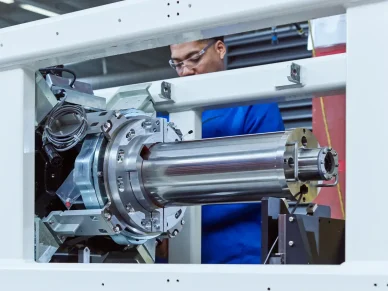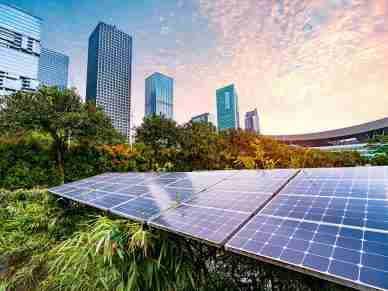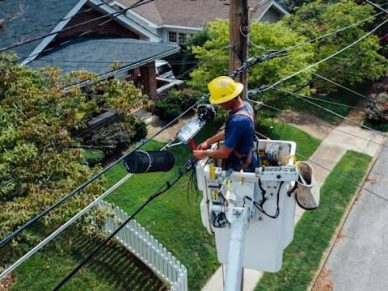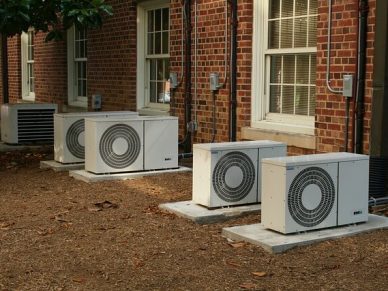Time to Rethink Power
As blackouts increase in frequency, residential backup power must become a priority. Power outages can lead to spoiled food, inoperative appliances and stubbed toes, among other problems. Is the average person ready for an extended blackout?

The Next Blackout Will Happen Sooner than You Think
Despite the federal government’s recent initiatives to modernize the country’s electrical grid, power outage frequency is rising. Increasingly outdated infrastructure, emerging cyberthreats and worsening severe weather events have become the top contributing factors.
For reference, most of the electrical grid in the U.S. was built up to six decades ago. According to the U.S. Department of Energy, about 70% of transmission lines are about three decades old. Variables like faults, incompatibility and unaddressed damage are becoming more common, leading to more — and longer — blackouts.
In the U.S., the average person experienced 1.4 electric power interruptions in 2022, amounting to nearly six hours of outages in total. Some states experienced double or even triple that figure, reaching 19.1 hours. Millions on the coast went without power for weeks in some cases.
3 Backup Power Solutions for Your Home
On average, homes in the U.S. used 10,791 total kilowatt-hours (kWh) in 2022, amounting to about 30 kWh per day. Many backup power solutions available to homeowners and renters can meet this need, depending on their size, type and output.
1. Generators
Since generators combust liquefied petroleum, propane, diesel or gasoline to generate power, they require a continuous fuel supply. While smaller models can output a few dozen kWh, larger models can produce a few hundred.
2. Backup Battery Systems
Backup battery systems store energy from the electrical grid to be used during power interruptions. Most backup batteries’ capacity tops out at around a dozen kWh, meaning the average person cannot use them to power their entire home.
3. Solar Panels
Since solar panels convert sunlight into energy, they are ideal for places that get a lot of sun. Of course, renters may not be able to benefit from this residential backup power option since landlords may not agree to a rooftop installation.
Long-Lasting and Foolproof: Standby Generators
Despite being one of the most expensive residential backup power options available, standby generators outperform their counterparts and backup battery systems.
Installation
A standby generator is a sizeable machine connected to or mounted on an external wall, so professional installation is required — the average DIY enthusiast cannot connect gas lines. Model selection, site preparation, fuel source hookup and installation can take weeks.
Cost
These backup power solutions are expensive. A whole-house standby generator’s price tag ranges from $5,000-$45,000, depending on its output and the number of electric appliances in the home. Of course, homeowners should also factor in fuel costs.
Ease of Use
A standby generator kicks on automatically during outages, making it a highly convenient option. Moreover, refilling the tank is unnecessary since permanent generators connect directly to a dedicated fuel source. That said, system failure is a possibility if users disregard maintenance.
Convenient and Inexpensive: Portable Generators
Portable generators are among the most common choices for backup power because they are cheap, mobile and easy to install — unlike many other options.
Installation
Portable generators are easy to transport and do not need to be hooked up to a fuel source. However, users must place them at least 20 feet from the building because they produce carbon monoxide — a colorless, odorless gas that can cause death — from their exhaust.
Cost
A portable generator costs anywhere from $500-$2,000, depending on size, output and type, making it one of the cheapest options for residential backup power. However, the ongoing cost of fuel can be expensive, especially during extended outages when supply is low.
Considering a larger portable generator can use up to 20 gallons of gasoline daily, it can quickly become expensive. Individuals could spend anywhere from $40-$80 per day or more depending on local gas prices.
Ease of Use
Portable generators are less convenient than their standby counterparts because they require a manual start. Moreover, since these machines are typically smaller and have an independent fuel supply, users must refuel more often.
Advantageous Yet Limited: Backup Battery Systems
These systems only produce power until they deplete their stored energy — making them less than ideal during extended outages. However, their ease of use is better than generators.
Installation
Backup battery systems are typically wall-mounted. A technician needs around one day to install one. As with standby generators, DIY work is inadvisable. However, portable models do exist. While heavy, their wheels or handles make them relatively easy to transport.
Cost
While some of the top backup power solutions range from $6,200-$12,000, their price varies significantly depending on their output. Whole-home backup battery systems are typically five figures. On the other hand, portable models can cost as little as a few hundred dollars.
Ease of Use
These systems recharge rapidly, making them convenient for shorter, frequent outages. They also provide power automatically and require minimal maintenance. The mobile versions are designed for easy handling, which is ideal for powering critical appliances at a moment’s notice.
For more detailed information on backup power supply options, consider the APC Smart UPS that can be monitored through an APC Smart UPS RM 120V Network Card.
Sustainable and Dependable: Solar Panel Systems
Unlike generators and backup battery systems, solar panels do not run on a finite fuel supply. Even without an energy storage system, they are almost guaranteed to provide power daily.
Installation
Although professional work is ideal, homeowners can secure permits and proceed with minimal reliance on third parties. Alternatively, they can hire an installer. Either way, while a rooftop solar installation can be done in one day, the red tape can make it a months-long process.
Cost
Solar panels can cost anywhere from a few thousand dollars to tens of thousands of dollars. If homeowners want to store excess energy, they must spend between $12,000 and $22,000 on a storage system. However, ongoing costs are minimal since power production is free.
Ease of Use
These systems work automatically and operate on a near-infinite energy source. They can last decades with minimal maintenance — homeowners generally only need to clean their photovoltaic cells every few months to ensure maximum sunlight capture.
What Is the Best Source of Residential Backup Power?
Selecting the best residential backup power option is easier than it may seem. People should consider their home’s size, the number of electronic appliances they plan to use in an outage and the availability of fuel in their region. They should also consider what installation timeline is acceptable for their situation.
Emily Newton is the Editor-in-Chief of Revolutionized Magazine, an online publication that explores innovations in science and technology.
















Leave a Reply